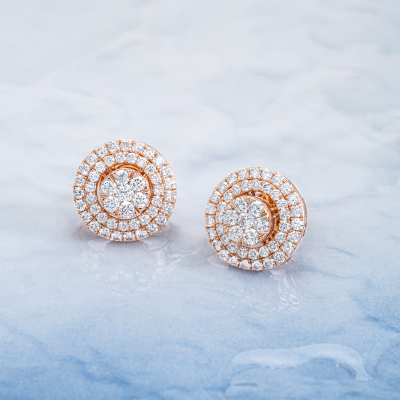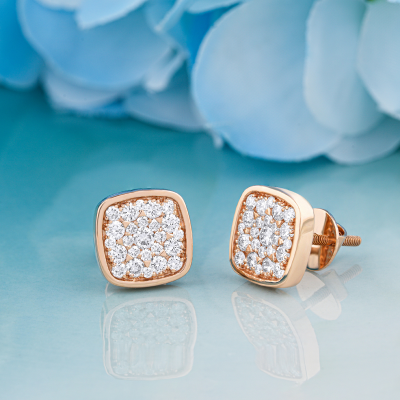The measure of diamond quality
A piece of diamond comes in various colors, shapes, and sizes. Every piece of gemstone has unique features that help determine its value. So, when assessing the measure of diamond quality, one needs to determine the 4C's of a diamond.
The American gem Society (AGS) notes that diamonds are pretty expensive. So, getting the assurance of the quality you have paid for is essential.
Having a little bit of information about diamonds before purchasing will prove very useful. And the best part is you can use the same grading system used by professionals to assess the quality of diamonds.
There are four Cs of diamond quality:
- Cut
- Color
- Clarity
- Carat Weight
Assessing the measure of diamond quality
1. A diamond's cut quality
The quality of the cut of the diamond is essential for aesthetics. A well-cut diamond is sure to dazzle anyone who looks at it. Every facet and angle of the diamond interacts with light to give a bright, shiny appearance. Determining the cut quality of round diamonds is objective, but for other fancy shapes, it is relatively subjective.
This is how a perfect diamond cut creates its three optical effects:
Brightness – It is the white light reflection off your diamond.
Fire – It refers to the flashes of color that a diamond emits when light refracts through the diamond due to the prismatic effect.
Scintillation – This feature comes into play between your gemstone's dark and light areas.
The diamond purity scale of AGS for the cut quality of the diamond is:
- Ideal cut = 0
- Excellent = 1
- Very Good = 2
- Good = 3 to 4
- Fair = 5 to 7
- Poor = 8 to 10
2. A diamond’s color quality
The quality of the color has a significant influence on the value of the diamond. A perfect piece of diamond is colorless and transparent. Any shade of color in the diamond will make a big difference in the diamond’s quality.
Most of the color distinctions are so subtle that they are invisible to the naked eye. However, the Gemological Institute of America (GIA) explains that even minute differences impact the price of the diamond.
Although, there is one exception. Color in the diamond will now lower its value if the color is judged to be a "fancy color," like a red diamond or a canary yellow.
Thus, the elements of the GIA diamond color grading scale while assessing the measure of diamond quality are:
- Colorless (D to F)
- Near Colorless (G to J)
- Faint (K to M)
- Very Light (N to R)
- Light (S to Z)
3. Rating the clarity of your diamond
It is essential to understand the clarity rating of your diamond. A diamond that is flawless and perfect does not have any surface imperfections or inclusions. While assessing the measure of diamond quality, poor clarity quality is found to have surface aberrations.
Clarity has an integral part in assessing the value of the stone because of the notion that a diamond with a higher clarity grade is rare in nature. Not only does it play an essential part in the rarity of the stone, but a stone will have a cloudy appearance if it has a low clarity grade.
Still, wondering how to know the purity of diamond? Let us elaborate on the clarity grades of diamonds under 10x magnification –
- Diamonds with a Flawless (FL) clarity grade do not have any inclusions or blemishes.
- Diamonds with Internally Flawless (IF) grade have no internal inclusions but some minor surface blemishes. Those blemishes are visible only under 10x magnification.
- Diamonds with Very, Very Slightly Included (VVS1) and (VVS2) have slight inclusions that are quite difficult to see even when put under 10x magnification.
- Diamonds that are Slightly Included (SI1) and (SI2) have some visible inclusions when put under magnification. Unaided vision allows one to see them.
- Diamonds that have Included (I1), (I2), and (I3) clarity grades have visible inclusions easily seen through the naked eye. They have the potential risk of less durability as you go further down the scale.
Diamonds that are Flawless (FL) are extremely rare and incredibly expensive. But fortunately, diamonds that have low clarity grade can appear perfect to the naked eye. Diamonds are "eye clean," which are not actually Flawless (FL) but appear perfect to the eye.
“Eye clean” diamonds are not so expensive and look perfect, just like flawless diamonds. Thus, customers are far more comfortable buying them when choosing stones for their diamond jewelry. For more detailed check out How Many Types Of Diamond Are There?
4. Diamond carat weight
Assessing the measure of diamond quality also includes determining the carat weight of the diamond. Since larger diamonds are more expensive than smaller ones, the stone's carat weight is often associated with the value and quality of the diamond. The purity of diamond is measured in carats.
It is also essential to understand that all the carat weights of diamonds manufactured are not similar. However, the carat of the stone is not the only feature that influences its value and cost. For instance, a three-carat diamond of lesser cut, color, and clarity grade is less expensive than a two-carat diamond of higher cut, color, and clarity grade.
Thus, it is important to consider all the 4Cs of diamond to assess the measure of diamond quality. There are also various grading institutions such as GIA, AGS, IGI, and many more that will also help in determining the authenticity of your diamond.










